We did something drastic this February to escape those drizzly grey days so typical in the Pacific Northwest: we ran away to Ecuador. Some might say that was a bit extreme…and indeed it was, in every way imaginable.
Why Ecuador? For the ecological diversity, the culture, the climate, the coffee, the chocolate… to name a few good reasons.
It seemed like an adventurous idea at the time – and yes, a bit crazy – but once you hit that “buy” button on the airline ticket website, you are committed.
First Impressions:
[su_box title=”Photo Gallery” style=”soft” box_color=”#34634c” title_color=”#1c3823″]To see more of our pictures from Ecuador, take these links:
- The People
- The Cloud Forest
- The Amazon Jungle: The Cuyabeno Region
- Friends in the Cuyabeno
- The Highlands: Farm and Countryside
- Baños, Land of Waterfalls
- Ingapirca Inca Ruins
- Cuenca: City of Old & New
- The Markets! Oh My!
- Quito: Historical Wonder
- And More! (the etc. along the way and in between) [/su_box]
It didn’t really sink in as to what we had done until we found ourselves on a crowded public bus with people dressed in colorful clothes and Bowler hats, headed down a very steep, twisty road through a dense mixture of broad-leafed plants I didn’t recognize, and all the while, blaring on the bus loudspeakers was traditional South American music, complete with pan flutes. “Oh my gosh. We really are in Ecuador!
Ecuador is a lot like the Pacific Northwest: it has mountains, rivers, the ocean, arid areas, and a rainforest – all in a compact region – but the similarities stop there. Being on the equator, of course, it is warmer – and the days and nights are remarkably even all year round—conveniently predictable. The growing conditions are perfect for just about everything; in fact, the sheer diversity and beauty of this relatively small country is simply phenomenal.
The cloud forest is home to colorful flowers and just as colorful toucans, parrots, and macaws, and hundreds of varieties of butterflies. It is a place to walk quietly amidst towering ferns and draping vines, listen to the calls of the birds hidden in the canopy, and stand in the mist of waterfalls. Within a day’s drive is the thick Amazon jungle, where tribes still live off the land in places never seen by foreigners; where you can wake up in the morning to the calls of howling monkeys and tread softly in the night to find caimans, snakes, and zillions of insects and spiders…including tarantulas. BIG tarantulas. LONG snakes. And oh yes, LIVE caimans with glowing red eyes! The jungle will command respect – and awe. But wait—there’s more: Down the center of the country is the spine of the Andes Mountains, a series of active volcanoes that create their own climate, snagging the clouds in the afternoons and tearing them open to release downpours on the little people below. We were standing at about 13,000 feet on the edge of one of these calderas, looking down at a lake, our sea-level-adapted lungs struggling to catch a breath, even while standing still. Feeling just a bit light headed, we realized with a certain giddiness, “We are almost as high up as the top of Mount Rainier – and guess what – it never snows here!” Never snows. Whoaa. And yes, the llamas roam wild.
To explain: I am a lowland gardener. We have our Olympic mountains, but we farm the flat lands. Our challenges include cool wet winters, very dry, moderately warm summers, and being near the coast, a lot of wind pretty much all the time. We follow the phases of the moon and the tides. I am able to grow several tubers from the Andes (oca, mashua, yacon, ulluco), which are rather unusual here; I even used to have a half dozen llamas; we like to spend time in the mountains, on the ocean, and trekking about in our (temperate) rainforest. So I was anxious to meet my kindred Ecuadorian spirits and see their farming methods and way of life.
What I Learned in Ecuador
First, the country is gorgeous – the diversity of the topography, flora, and fauna have to be seen to be believed – it is something you really can’t capture in a photo or description. Also, Ecuador has an interesting history, with many different indigenous cultures and influences from other lands; the art and architecture are as diverse as the peoples, representing pre-Columbian times to the Incas, through Spanish conquerors and colonial influences, to our more modern forms of expression. But the People – the people we met during our travels were some of the most welcoming, kind, and generous people we have met anywhere. The people were simply amazing, proving that my limited language skills were not a barrier to connecting with humanity.
The Journey
The first part of our trip was spent in the Cloud Forest to the northwest of Quito and then east to the jungle of the Amazon Rainforest in the area known as the Cuyabeno. These areas are Nature’s permaculture gardens at their best. Every square inch is covered with something growing. Every layer is filled, from the groundcovers to the towering trees to the vines growing up or growing down, tying it all together. The sheer biomass is simply phenomenal. However, the soil is surprisingly thin. There is a thick clay layer beneath the topsoil, and although vegetation decays quickly in the warm, humid environment, the nutrients are quickly snatched up by lateral roots that needn’t (or can’t) dig deep for water. As a result, the shallow-rooted trees can easily topple; there is intense competition for limited resources of nutrients and light (and at certain times, even water); and plants and animals alike have developed mechanisms to work with one another or otherwise find a niche that ensures their survival. Many plants depend on animals to disperse their seed; they coincide their bloom and seed times with animal habits. Others have developed a means to protect themselves from animals that might otherwise destroy them, for example, in the jungle, there are trees that have large sharp thorns to prevent monkeys from climbing up and eating all the fruit. Others have adopted unique ways of finding what they need to survive, like the trees that “walk,” which have a trunk that looks like a cluster of roots above the ground, and while some roots die back, new ones move (like legs) toward light and nutrients. Insects, amphibians, and birds are experts at camouflage. Some animals are poisonous – others just look poisonous. And so on…. the complexities of the ecosystems are mindboggling.
From the Jungle to the Highlands:
We reluctantly left the rainforest, but anticipated high adventures in the mountains. I had read much about permaculture farms in Ecuador, and I was looking forward to seeing them – maybe even helping out on one (spoiler alert: we did not). The ones I read about were operated by foreigners who had bought up land in Ecuador…but the farms were not obvious on the side of the road, and perhaps the owners preferred it that way (perhaps if we had contacted them ahead of time?). However, where we wandered in the highlands, family farms in the traditional sense were plentiful, as were larger plots devoted to beans and corn and other crops, which in many ways, was more interesting to me. We saw large greenhouses full of flowers and tomatoes, often built on 45-degree slopes. We saw bananas, sugar cane, cacao, and coffee, but not the large plantations more common in other regions. Yes – we did see examples of the 3 sisters combination of squash, corn, and beans. Were they purposefully grown together because of the symbiotic relationship – or did they happen to be grown like that because it made physical sense – or both? The squash would tumble over a hillside while the beans and corn were nearby wherever they fit best. I expected to see more gardens configured in beds, with swales dug on contour to direct water flow, and the use of lots of mulch. This was not the case. On larger tracts, things were grown in rows of mono-crops, like anywhere else, sometimes with water ditches in between; but on smaller landscapes, crops were often just packed in as tightly as possible – sometimes even without rows. Women were out turning over the soil with a tool that had a hoe on one side and a pick on the other. There was both a lot of rock and what appeared to be decent volcanic soil, enriched with animal manures. Cows, pigs, horses, mules, sheep, goats, and even llamas were often staked out in the field or even right by the road. I wanted to get out and help, feel the soil, learn their methods… but I admit, most of my observations were from the window of a public bus. I took a lot of pictures that I called “drive-by shootings.”
Still, you can see a lot of country from a bus. It struck me how much our lives are influenced by topography and climate. This seems so obvious, but seriously, there was very little flat ground in the highlands – most everything was on a steep slope, either up or down – which meant that the roads wind their way back and forth through the hills, and during rainy periods, washouts are common. Houses are tucked into hillsides, and people farm the land with a shovel and a hoe up, up, up the steep hillsides to the very top. Amazing! I began to realize that this “simple” life was perhaps not so simple, but a lot of hard work – and all of it by hand! It was too steep for machinery. We often would see elderly people carrying huge bundles in blankets tied to their backs, walking up the hills, not appearing the least bit out of breath. Inspirational!
Ecuador was a good example of how well people can live with very little, using whatever resources they have available. Everywhere we saw how people used salvaged materials for construction, fencing, or other needs. The country has a lot of rock – and most of the dwellings were of stone and concrete.
In some areas, we felt like we had walked back through the rubble of time. Indeed, we literally walked in the footsteps of the Incas and stood in the Temple of the Sun! We witnessed a way of life connected to something that goes back hundreds, even thousands, of years – a way of being that understands the changes in the seasons (rainy or dry), the movements of the sun across the sky, and the waxing and waning of the moon. The desire to understand the nature of the universe and where we come from transcends time and culture – as does our desire to express our understanding in music, art, crafts, and architecture. It was very empowering.
The Markets! Oh, My!
Most interesting was how the locals have maintained a market economy, and by that I mean a culture of selling their products at local markets and, well, just about everywhere. Each person had their own space for their goods – perhaps on the sidewalk or by the side of the road, or perhaps next to dozens of other vendors under a larger structure. We saw very few grocery stores, in our sense of the term, but rather, an incredible abundance of locally grown fruits and vegetables, meats, cheeses, and handmade items. The wealth of talent in artisanal crafts is simply extraordinary. Food vendors were everywhere. Entering one of the market places is stepping into an explosion of color, sounds, smells, and activity.
Challenges Are Everywhere Throughout the World…
As beautiful as it is, Ecuador is not without its challenges. Environmental disasters such as volcanic eruptions, land erosion, and earthquakes are common. Large (primarily U.S.) oil companies have polluted sensitive areas of the Amazon, areas that are now identified with high cancer rates among locals. Logging and deforestation, both for the timber and to increase farmland, also create serious repercussions. Ecuador is a small country. Those of us in the U.S., with our sprawling urban neighborhoods and massive highway systems, might have a hard time understanding what it might be like to stake out a homestead in a country where land is very limited, and much of it is characterized by geographical extremes, prone to catastrophe. Poverty levels are high – and yet – at least to this outsider, it appeared that although people did not have much, they had what they needed. Food was inexpensive, and people appeared to be well-fed. Children were obviously loved and well taken care of. We did not see the homelessness that we see here in the states. Nor did we see the obsession with gadgets, toys, plastics, the “latest thing” marketed as a “must-have-to-have-fun-and-be-cool” trinket. Kids played outside and with each other. Such a concept.
But this is a gardening blog. The truth is, though, we cannot separate the gardens from the people — people are intrinsically connected to the land here. The topography, the climate, when it rains and how much, what grows, what does not – these factors all influence the people and who they are. People are also a reflection of their history and their values. Each region is characterized by its specialty, whether that be weavings, wood carvings, silver jewelry, Panama hats, or any number of other things – these are an understable source of pride. Oil has brought the country needed income, but at a price; and as oil prices fluctuate, people need to find other ways to make things work. Tourism is a growing industry, with its own associated impacts. It will be important that tourists and tourist operations alike work together to protect the very places that attract people here in the first place.
Poverty? Perhaps my ignorance is showing. To me, I saw Ecuador as an extremely wealthy country in ways that I would measure wealth: in the beauty and diversity of its land, flora, and fauna; in the complexity of its rich culture and history; in the many talents of its peoples; and most of all, wealth derived from a culture that places first and foremost one’s faith, family, and kindness toward others.
It is difficult to make generalizations about a country so diverse, and especially considering we were only there a month, and there still was so much we didn’t see. I want to say the trip was life-changing, and I think it was, in many respects. But in order to be “life-changing,” we must be willing to change our lives, right?
I admit, I like my life. I feel extremely fortunate to live where we do and to be able to travel to such a faraway place. I always feel a need to reach out to others, to do something to make the world a better place, but have I changed any lives? It would be arrogant and presumptuous for me to think I could go to another country, step in, and fix anything. Instead, it was THEY who taught me.
I have a new appreciation for traditions, natural polycultures, the importance of diversity, farming under difficult circumstances, and the struggle for survival. I also have an increased appreciation for our relationship to the land, “simple” living, and how food connects us all. But the greatest of all: I was profoundly touched by the kindness of these people – even random strangers who would wonder where we were from, what we did, and how many children and grandchildren we might have. They greeted us with open arms. We made good friends who I definitely hope to see again. I am inspired to do more.
You know, our lives are filled with so much noise. We lose track of what is important; we become distracted; we become annoyed at people and things that interfere with our misguided focus. Our televisions too easily fill our lives with tension and negativity.
What did this trip show me?
- Leave it all behind.
- Venture into the jungle.
- Go back to the simple farm, wherever that may be, even if just at heart.
- Emphasize what is essential in terms of nourishment.
- Eat good, homegrown food.
- Share the surplus with those less fortunate.
- Love your family.
- Treasure your friends.
- Be true to your beliefs.
- Return home and be appreciative.
- And of course, play music!
(Maybe even learn to play the pan flute).
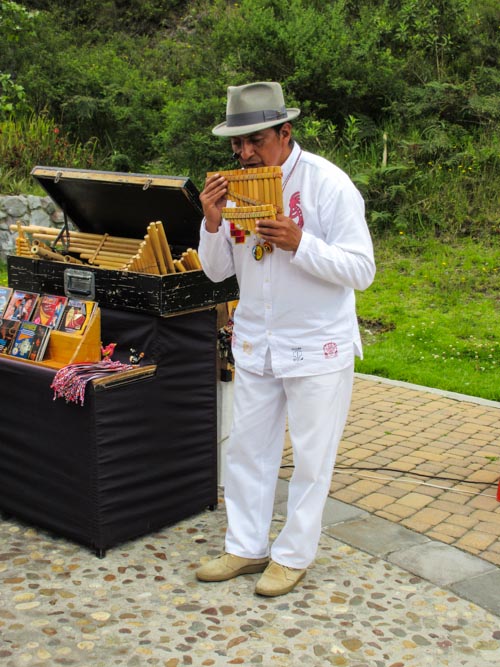
Thank you, Ecuador!
* * *
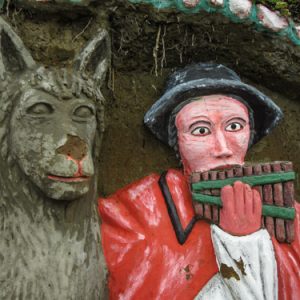
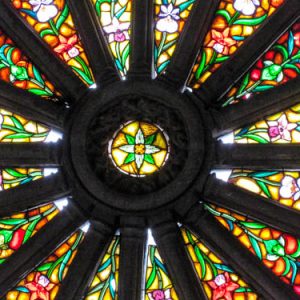
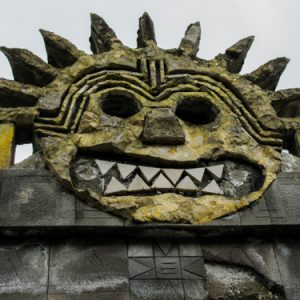
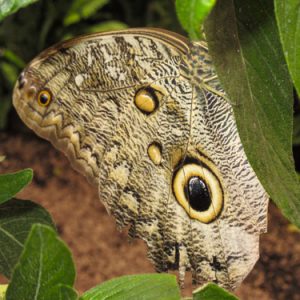


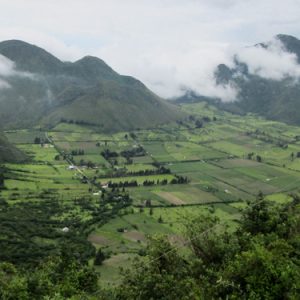
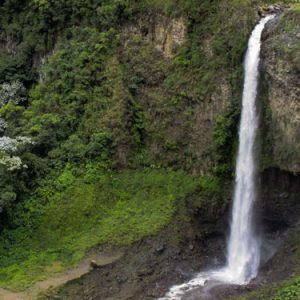
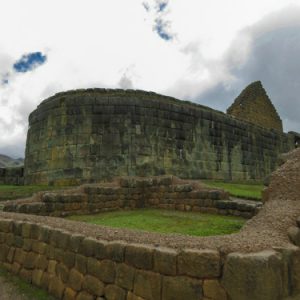

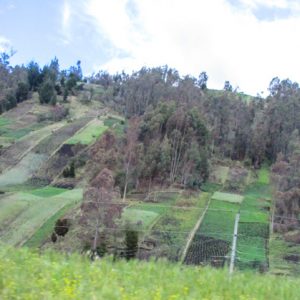
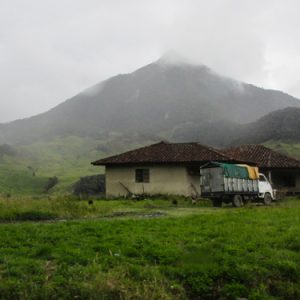
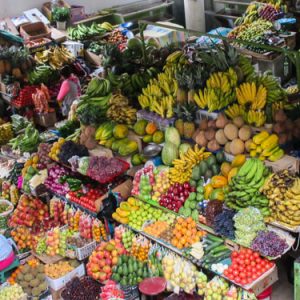


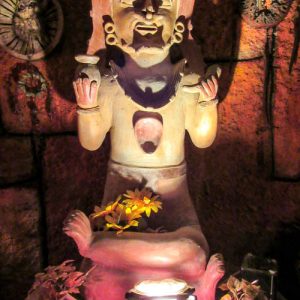

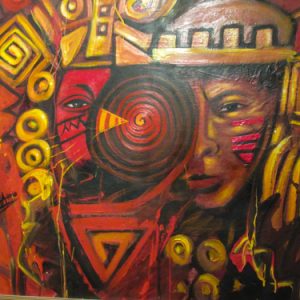

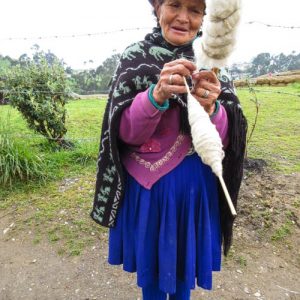
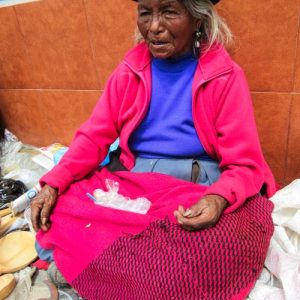
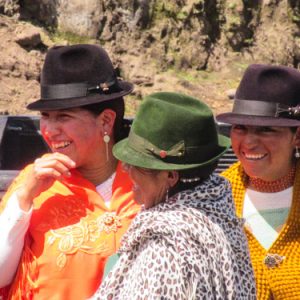
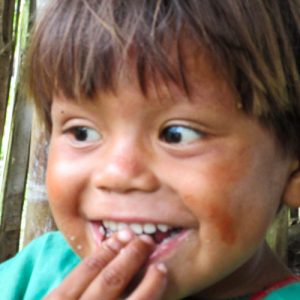
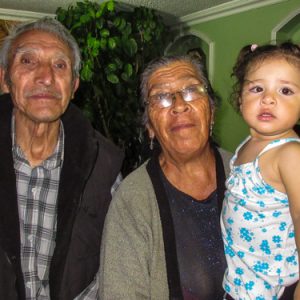
Gorgeous! Looks like an amazing trip. So great to see what you saw when you visited 🙂
Thanks, Caitlin — And fun to see your pictures, too, with more of an emphasis on the wonderful foods! What a beautiful country! (and to my readers, check out Caitlin’s blog at http://forageddish.com – she is always coming up with something healthy & fun; the photography alone will give you inspiration to try something new & creative. It’s a great food blog!)
Thank you for all the fabulous photos of Ecuador, what a beautiful country! I was intrigued by the marketplace. I hope you bought one of those colorful baskets. And what a wonderful array of fruits and vegetables. Just curious… did you see any garlic?
Good question! No, I did not see much in the way of garlic. I would think garlic would be difficult there, being as it requires a cold period to form a bulb. The weather there stays mild all year round. But we did see a variation in crops grown at the higher elevations compared to the lower (much more corn at lower elevations, for example). What I was looking for, though, was amaranth, quinoa, and assorted roots: oca, mashua, yacon, ulluco, and others. I was amazed at the number of varieties of rice available in even the smallest of street-corner shops! Fresh fruits every single day. They are always making fresh juices. Such a treat! Lots of pineapple, guava, banana, and some I had never heard of. And yes, I purchased a few of the tiny colorful baskets. It was amazing how small they made them and how intricate the weaving! They used a dowel as a form around which to weave the reeds.
Thank you for a wonderful glimpse into Ecuadorian living, your article really opened my understanding of this beautiful country! Your sense of appreciation shines through in every line, I can see your BIG happy smile coming straight from your heart just reading this! I’m so happy that you made this trip and shared your heart with people there. Photos are great too, with an eye like yours, there’s no need for an expensive camera!
Kind words, Dianna. Thank you. <3
Lovely story! Such a colorful writer! You should start a travel blog!
Wishing you all the best in your cosmic travels. Would be nice to connect … lets talk some time? Send me an email with your phone number, if you wish.
Best to you and your family,
Leslie Huttunen
Thank you, Les – so great to hear from you! and fun to find you on here and share … it would be fun to reconnect. I hope to head up to Anchorage in the near future for a visit. Will send you a mssg.
Thank you so much Blythe for this wonderful description of your travels and the things you have learned!!
Thank you, Kay! I didn’t take my good camera … I purchased a little reconditioned point-and-shoot that I wouldn’t be upset about if I lost. It was very frustrating, being as I was used to other features and buttons – but I was glad I got a few good shots out of it that help me to remember what a magical place Ecuador is. I appreciate your stopping in to the site and taking the time to read through it all 🙂 Hope to see you soon…
~blythe